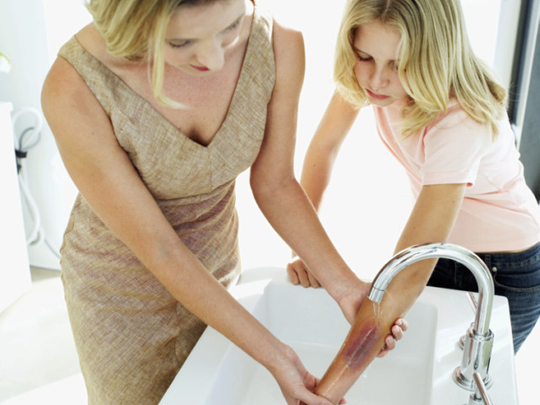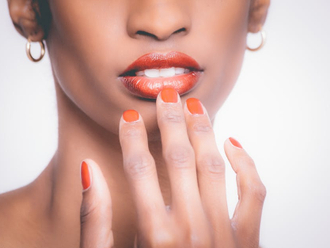
Scalding caused by a hot pot that topples off the hob or a burn from the barbecue can take place in the wink of an eye. Not only are they extremely painful, they can also cause permanent harm.
First aid applied properly and quickly can make a big difference, but prevention is even better.
Scalding takes place typically in the kitchen. “Children are particularly at risk, when they pull a pot and its contents off the stove or tug at the cord of an electric kettle, overturning it,” says Stefan Markus, a paramedic in Germany.
The chance of this happening can be reduced by guards protecting the hobs, by using the rear hobs and by tucking cables out of reach. The same applies to cups containing hot drinks.
“A single cup can cause scalds to 30 per cent of the body surface of a child,” says Adelheid Gottwald, who works for a foundation helping children with burns.
Hot liquids flow downwards over the body, meaning that scalds spread more than burns, which are restricted to the part of the body in direct contact with the heat source.
Burns happen most frequently at the barbecue. “The most common cause here is incorrect use of starter fluids,” Markus says.
The physical damage caused by burns and scalds are similar, as both lead to damage to the skin. Their severity depends on the depth and area of the surface involved. The deeper the heat penetrates, the worse the damage to tissue under the skin.
The first thing to do in the event of an accident is to get away from the danger zone, dousing glowing coals or smouldering clothing with water.
“As long as any burnt clothing has not become stuck to the skin, it should be removed carefully, but certainly not ripped off in a panic,” according to Hans-Richard Paschen, a specialist casualty doctor working with the fire services in Hamburg.
Gottwald says, however, that in the event of scalding, any wet clothing should be removed immediately.
In the case of small-scale first-degree burns or scalds, such as to a finger, the pain can be eased by placing the wound under lukewarm running water. A gel or ointment can then be applied.
Large-scale wounds should be treated differently. “Cold water poses the risk of harming the body through too severe cooling,” Markus says. This could promote infection.
Larger burns should be immobilised, covered with a sterile cloth where necessary and a doctor consulted.
“In the case of adults, a burn or scald can be life-threatening when 10 per cent or more of the body surface is affected, and with children just 5 per cent,” Markus says. A doctor should in any case be consulted if the burn affects the face, joints or the genital area.
The same is true when there is redness or any sign of pus around the burn that could indicate infection. Third-degree burns should always be treated by a doctor.
Paschen explains how to tell the difference: “First-degree burns affect only the outer skin, which turns red. With second-degree burns, the skin lying under the outer layer is also injured.” Blisters form in addition to the reddening.
“In the case of third-degree burns, all the layers of the skin are affected,” Paschen says. Cells, including nerve cells, are killed off, and the skin turns black.
— DPA












